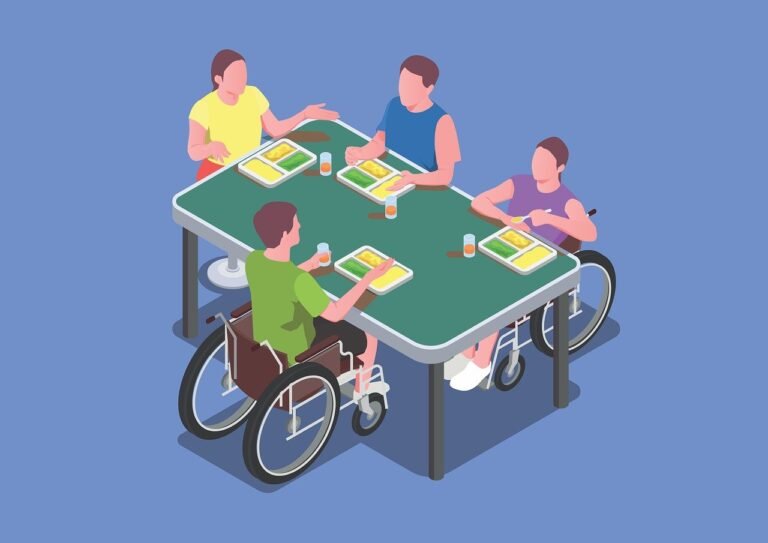United in Pain: The Family’s Guide to Thriving with Chronic Pain
Introduction:
Chronic pain is a pervasive and debilitating condition that extends beyond the individual sufferer, significantly affecting the entire family unit. Unlike acute pain, which is temporary and often linked to a specific injury or illness, chronic pain persists for months or even years, becoming a constant part of everyday life. This ongoing discomfort not only challenges the physical and emotional well-being of the person in pain but also places considerable stress on family dynamics, relationships, and overall quality of life. Understanding how to cope with chronic pain as a family is crucial for fostering a supportive and resilient environment that can help mitigate the negative impacts of this condition.
Coping with Chronic Pain as a Family:

You May Also Like: Smile Bright: A Comprehensive Guide to Family Dental Health
Coping with chronic pain as a family requires a multi-faceted approach that addresses the emotional, psychological, and practical challenges posed by the condition. Here are key strategies families can use to navigate this difficult journey together:
1. Education and Understanding
- Learn About Chronic Pain: Educating all family members about the nature of chronic pain, its causes, and its effects can promote empathy and understanding. This knowledge can help demystify the condition and reduce feelings of frustration or helplessness.
- Acknowledge the Impact: Recognize and validate the emotional and psychological toll that chronic pain takes on both the individual and the family. Acknowledging these impacts is the first step towards addressing them effectively.
2. Open and Honest Communication
- Encourage Dialogue: Foster an environment where everyone feels comfortable expressing their feelings and concerns. Regular family meetings can provide a structured space for discussing how chronic pain is affecting each member and brainstorming solutions together.
- Active Listening: Practice active listening, where family members truly hear and validate each other’s experiences and emotions. This can help build stronger, more supportive relationships.
More: Health Tokens for a Better Life: 101 Ways to Boost Your Well-being
3. Emotional Support and Mental Health
- Seek Professional Help: Engaging with mental health professionals, such as therapists or counselors, can provide invaluable support for both the person with chronic pain and their family members. Therapy can help manage anxiety, depression, and stress.
- Support Groups: Joining support groups for families dealing with chronic pain can provide a sense of community and shared experience. These groups offer a platform to exchange coping strategies and gain emotional support.
4. Practical Adjustments and Adaptations
- Flexible Roles: Be open to redistributing household responsibilities to accommodate the limitations imposed by chronic pain. This might mean other family members taking on more chores or modifying routines.
- Create a Comfortable Environment: Make the home environment as comfortable as possible for the person with chronic pain. This could include ergonomic furniture, pain management tools, and easily accessible resources.
5. Financial Planning and Management
- Budgeting and Resources: Chronic pain can lead to significant medical expenses and potential loss of income. Families should plan their finances carefully, seek out insurance benefits, and explore financial assistance programs.
- Resource Utilization: Take advantage of community resources, such as home healthcare services, respite care, and charitable organizations, to alleviate some of the burdens.
6. Encouraging Independence and Self-Care
- Promote Autonomy: Support the person with chronic pain in maintaining as much independence as possible. Encouraging self-care routines and involvement in decision-making can enhance their sense of control and well-being.
- Healthy Lifestyle Choices: Encourage healthy lifestyle choices, such as regular exercise (within limits), a balanced diet, and adequate sleep, which can help manage chronic pain symptoms.
7. Building Resilience and Finding Joy
- Focus on Strengths: Identify and build on the family’s strengths and resources. Celebrating small victories and acknowledging the resilience of family members can boost morale.
- Create Positive Experiences: Make time for enjoyable activities and family bonding, even if they need to be adapted to accommodate the person with chronic pain. These positive experiences can help maintain a sense of normalcy and joy.
Navigating the Challenges of Chronic Pain Together:
Chronic pain, with its persistent and often debilitating nature, presents a host of challenges that extend well beyond the individual experiencing it. Families navigating the complexities of chronic pain must work together to address the emotional, psychological, and practical hurdles that arise. By fostering a collaborative and supportive environment, families can better manage these challenges and improve their overall quality of life. Here are key strategies for navigating the challenges of chronic pain together:
1. Fostering a Supportive Environment
- Empathy and Understanding: Cultivate empathy within the family by encouraging each member to learn about chronic pain and its effects. Understanding the condition can reduce frustration and foster a more supportive atmosphere.
- Emotional Validation: Ensure that all family members feel heard and their emotions validated. Acknowledging the difficulties faced by the person with chronic pain and their caregivers can strengthen familial bonds.
2. Effective Communication
- Regular Check-ins: Schedule regular family meetings to discuss the impacts of chronic pain and share updates on each member’s emotional and physical state. This ensures that concerns are addressed promptly and collectively.
- Clear and Honest Dialogue: Promote open communication where family members feel safe expressing their feelings and concerns. Honest dialogue can prevent misunderstandings and build trust.
3. Collaborative Problem-Solving
- Shared Decision-Making: Involve all family members in decision-making processes related to managing chronic pain. This collaborative approach can lead to more comprehensive and effective solutions.
- Flexible Roles and Responsibilities: Adapt family roles and responsibilities to accommodate the limitations imposed by chronic pain. Flexibility in managing household tasks and caregiving duties can alleviate stress and ensure smoother daily functioning.
4. Accessing Professional Support
- Medical and Psychological Assistance: Engage with healthcare professionals, including pain specialists, therapists, and counselors. Professional guidance can provide tailored strategies for managing pain and its psychological impact.
- Support Groups and Networks: Join support groups for individuals and families dealing with chronic pain. These networks offer valuable resources, emotional support, and a sense of community.
5. Practical Adjustments
- Home Modifications: Make necessary adjustments to the home environment to ensure comfort and accessibility for the person with chronic pain. This could include ergonomic furniture, assistive devices, and easy access to essential items.
- Routine Adaptations: Modify daily routines to align with the needs and limitations of the person with chronic pain. Establishing a consistent and manageable routine can provide stability and reduce stress.
6. Financial Planning
- Budget Management: Develop a comprehensive budget that accounts for medical expenses, potential income loss, and other financial impacts of chronic pain. Proactive financial planning can mitigate stress and ensure financial stability.
- Resource Exploration: Explore financial assistance programs, insurance benefits, and community resources that can help offset the costs associated with chronic pain management.
7. Promoting Independence and Well-being
- Encouraging Autonomy: Support the person with chronic pain in maintaining independence and participating in decision-making. Empowering them to manage aspects of their care can boost their confidence and sense of control.
- Healthy Lifestyle Choices: Encourage healthy habits, including balanced nutrition, regular physical activity (within limits), and sufficient rest. These practices can improve overall well-being and help manage pain symptoms.
8. Building Resilience and Positivity
- Strengths-Based Approach: Focus on the family’s strengths and resilience. Celebrating small successes and recognizing the efforts of each family member can foster a positive outlook.
- Creating Joyful Moments: Engage in activities that bring joy and foster connections. Whether it’s family outings, game nights, or simple shared meals, these moments can provide relief from the daily stress of chronic pain.
Building a Supportive Environment: Family Roles in Coping with Chronic Pain

Chronic pain is a persistent and often debilitating condition that can profoundly affect a person’s physical and emotional well-being. The family plays a crucial role in supporting individuals coping with chronic pain. This support can significantly influence the management of pain, quality of life, and overall well-being of the affected individual. Here are key aspects of how families can create a supportive environment:
1. Emotional Support
- Active Listening: Family members should listen attentively and empathetically to the person experiencing chronic pain. This helps the individual feel heard and understood, reducing feelings of isolation.
- Validation: Acknowledging the pain and its impact without judgment is essential. Validating their experiences and emotions can foster a sense of being supported and cared for.
- Encouragement and Positivity: Encouraging a positive outlook and reinforcing the individual’s strengths and coping abilities can bolster their resilience.
2. Practical Support
- Assistance with Daily Activities: Helping with household chores, transportation to medical appointments, or other daily tasks can alleviate some of the burdens associated with chronic pain.
- Medical Management: Family members can assist in managing medications, keeping track of appointments, and communicating with healthcare providers.
- Adaptations and Accessibility: Making necessary adaptations to the home environment to enhance comfort and accessibility can improve the individual’s quality of life.
3. Educational Support
- Information Sharing: Educating themselves about chronic pain conditions and treatments enables family members to better understand what the individual is experiencing and how best to support them.
- Promoting Self-Management: Encouraging the individual to engage in self-management strategies, such as physical therapy, relaxation techniques, and pain management programs, can empower them to take control of their condition.
4. Social Support
- Maintaining Social Connections: Helping the individual maintain social connections and participate in social activities can reduce feelings of isolation and enhance emotional well-being.
- Support Groups: Encouraging participation in support groups for individuals with chronic pain and their families can provide a sense of community and shared understanding.
5. Advocacy
- Navigating Healthcare Systems: Family members can act as advocates, helping to navigate complex healthcare systems and ensuring the individual receives appropriate care and resources.
- Workplace Support: Advocating for necessary accommodations at the workplace can help the individual manage their pain while remaining employed.
6. Self-Care for Family Members
- Recognizing Their Own Needs: Family members must also take care of their own physical and emotional health. Caring for someone with chronic pain can be demanding, and self-care is essential to maintain their ability to provide support.
- Seeking Support: Family members should seek support for themselves, whether through counseling, support groups, or respite care, to prevent burnout and maintain their well-being.
Communication Strategies for Families Dealing with Chronic Pain:
Effective communication is vital for families coping with chronic pain. It helps in understanding the needs of the individual experiencing pain, reduces misunderstandings, and fosters a supportive environment. Here are key communication strategies for families dealing with chronic pain:
1. Open and Honest Communication
- Encourage Transparency: Encourage the individual with chronic pain to share their feelings, symptoms, and challenges openly. This helps family members understand their needs better and offer appropriate support.
- Be Honest About Your Own Feelings: Family members should also express their own emotions and concerns. This mutual openness can strengthen trust and understanding within the family.
2. Active Listening
- Give Full Attention: When the individual is speaking, give them your undivided attention. This shows that you value their feelings and experiences.
- Reflective Listening: Repeat back what you have heard to ensure understanding and to show that you are genuinely listening. For example, “It sounds like you’re feeling very frustrated with your pain today.”
3. Empathy and Validation
- Acknowledge Their Pain: Validate the individual’s pain and emotions without judgment. Statements like “I understand this is really hard for you” can be comforting.
- Show Empathy: Try to understand things from their perspective and express empathy. Phrases like “I can see how much this is affecting you” can be helpful.
4. Non-verbal Communication
- Be Mindful of Body Language: Maintain eye contact, nod, and use open body language to show you are engaged and supportive.
- Touch and Gestures: Gentle touches or hugs can convey support and compassion, but always be mindful of the person’s comfort level.
5. Constructive Feedback
- Be Positive and Supportive: When discussing issues or suggesting changes, focus on positive feedback and constructive criticism. Avoid blame or negativity.
- Use “I” Statements: Frame feedback in terms of your own feelings and experiences to avoid sounding accusatory. For example, “I feel concerned when you don’t take your medication on time.”
6. Setting Boundaries and Expectations
- Clear Boundaries: Establish clear boundaries to prevent misunderstandings and ensure everyone’s needs are respected. Discuss what each family member can and cannot do to support the individual with chronic pain.
- Realistic Expectations: Set realistic expectations regarding what the individual with chronic pain can do. Understand that their capabilities may vary from day to day.
7. Problem-Solving Together
- Collaborative Approach: Work together to solve problems and find solutions. This collaborative approach fosters a sense of teamwork and shared responsibility.
- Brainstorming Sessions: Hold family meetings to discuss challenges and brainstorm possible solutions. Encourage everyone to contribute ideas.
8. Regular Check-Ins
- Scheduled Discussions: Regularly scheduled family discussions can help keep everyone on the same page and provide ongoing support.
- Daily Check-Ins: Simple daily check-ins can ensure the individual with chronic pain feels supported and understood.
9. Using Technology and Tools
- Pain Journals: Encourage the individual to keep a pain journal to track symptoms, triggers, and effective coping strategies. This can facilitate more informed discussions with healthcare providers.
- Communication Apps: Utilize apps or online platforms that help track symptoms and communicate effectively about pain levels and needs.
10. Seeking Professional Help
- Family Counseling: Consider family counseling or therapy to improve communication skills and address any underlying issues.
- Educational Workshops: Participate in workshops or support groups to learn more about chronic pain and effective communication strategies.
Balancing Responsibilities: Managing Daily Life with Chronic Pain

Balancing responsibilities while managing daily life with chronic pain can be challenging, but with careful planning and prioritization, it’s possible to maintain a fulfilling lifestyle. Here are some strategies for finding balance:
1. Prioritize Tasks
- Identify Essential Tasks: Determine which tasks are essential and prioritize them. Focus on activities that are necessary for daily functioning and well-being.
- Delegate when Possible: Delegate non-essential tasks to family members, friends, or hired help to lighten your load.
2. Break Tasks into Manageable Steps
- Chunk Tasks: Break larger tasks into smaller, manageable steps. This approach can prevent overwhelm and make tasks more achievable.
- Use Timers or Pomodoro Technique: Set timers to work on tasks for short, focused intervals, followed by rest breaks. The Pomodoro Technique, for example, involves working for 25 minutes and then taking a 5-minute break.
3. Pace Yourself
- Listen to Your Body: Pay attention to your body’s signals and pace yourself accordingly. Take breaks when needed and avoid pushing yourself too hard.
- Use Energy Conservation Techniques: Practice energy conservation techniques, such as alternating between sitting and standing, using assistive devices, and planning rest periods throughout the day.
4. Plan and Schedule
- Use a Planner or Calendar: Keep track of appointments, tasks, and commitments using a planner or digital calendar. Schedule tasks during times when you typically have more energy.
- Set Realistic Goals: Set realistic goals for each day and adjust your expectations based on your energy levels and pain levels.
5. Practice Self-Care
- Prioritize Rest and Relaxation: Make time for rest and relaxation activities that help alleviate stress and manage pain, such as meditation, gentle stretching, or taking a warm bath.
- Healthy Lifestyle Habits: Maintain a healthy lifestyle by eating nutritious meals, staying hydrated, and engaging in regular exercise within your limits.
6. Seek Support
- Communicate with Loved Ones: Communicate openly with family members and friends about your limitations and needs. Seek their support and understanding.
- Join Support Groups: Connect with others who understand what you’re going through by joining support groups for individuals with chronic pain. Sharing experiences and coping strategies can be invaluable.
7. Adapt Your Environment
- Make Your Environment Comfortable: Modify your environment to make daily tasks easier and more comfortable. This might involve using ergonomic furniture, installing grab bars, or organizing your space for better accessibility.
- Use Assistive Devices: Consider using assistive devices or adaptive equipment to assist with tasks that are difficult due to pain or mobility issues.
8. Practice Mindfulness
- Stay Present: Practice mindfulness techniques to stay present and focused on the task at hand. This can help reduce stress and anxiety related to managing daily tasks.
- Acceptance: Practice acceptance of your limitations and focus on what you can do rather than dwelling on what you can’t.
9. Stay Flexible
- Be Flexible: Be willing to adapt your plans and routines based on how you’re feeling on any given day. Flexibility is key to managing daily life with chronic pain.
- Ask for Help When Needed: Don’t hesitate to ask for help when you need it. Reach out to healthcare providers, support groups, or loved ones for assistance.
10. Celebrate Small Victories
- Acknowledge Achievements: Celebrate your accomplishments, no matter how small. Recognize and celebrate the efforts you put into managing daily life with chronic pain.
Finding balance while managing daily life with chronic pain requires patience, self-awareness, and adaptability. By prioritizing tasks, pacing yourself, practicing self-care, seeking support, and making adjustments as needed, you can create a fulfilling and manageable routine that supports your overall well-being. Remember to be kind to yourself and celebrate your successes along the way.
Seeking Help as a Family: Therapies and Support Networks
Seeking help as a family when dealing with chronic pain is crucial for managing the condition effectively and supporting each other. Here are some therapies and support networks that families can explore together:
1. Family Therapy
- Benefits: Family therapy can help improve communication, resolve conflicts, and strengthen family relationships.
- Goals: The goals of family therapy may include enhancing understanding of chronic pain, fostering empathy and support, and developing effective coping strategies as a family unit.
- Find a Therapist: Look for a therapist who specializes in chronic pain and family therapy. They can facilitate discussions, provide education about chronic pain, and offer guidance on how to support each other.
2. Cognitive-Behavioral Therapy (CBT)
- Benefits: CBT can help individuals and families develop skills to manage chronic pain, such as coping techniques, stress reduction strategies, and changing negative thought patterns.
- Family Involvement: Some CBT programs involve family members in therapy sessions to learn how to support the individual with chronic pain and implement coping strategies together.
3. Pain Management Programs
- Benefits: Multidisciplinary pain management programs offer comprehensive treatment approaches that may include medical interventions, physical therapy, psychological support, and educational components.
- Family Education: Many pain management programs include educational sessions for family members to learn about chronic pain, pain management techniques, and how to support their loved one effectively.
4. Support Groups
- Benefits: Joining support groups for individuals with chronic pain and their families can provide a sense of community, shared understanding, and emotional support.
- Online Options: Look for online support groups or forums where families can connect with others facing similar challenges. These can be especially helpful for those unable to attend in-person meetings.
5. Individual Counseling
- Benefits: Individual counseling can provide a safe space for family members to explore their own emotions, concerns, and coping strategies related to living with chronic pain.
- Addressing Caregiver Stress: Caregivers may benefit from individual counseling to address caregiver stress, burnout, and self-care strategies.
6. Pain Education Workshops
- Benefits: Attend workshops or classes focused on chronic pain education and self-management strategies. These workshops can provide valuable information for both individuals with chronic pain and their families.
- Topics Covered: Workshops may cover topics such as understanding chronic pain, pain management techniques, communication skills, and maintaining a healthy lifestyle.
7. Adaptive Physical Activity Programs
- Benefits: Participating in adaptive physical activity programs tailored to individuals with chronic pain can help improve physical function, reduce pain, and enhance overall well-being.
- Family Participation: Some programs allow for family participation, encouraging exercise and movement as a family unit.
8. Occupational Therapy
- Benefits: Occupational therapists can help individuals with chronic pain and their families identify strategies to manage daily activities and responsibilities more effectively.
- Home Modifications: Occupational therapists can assess the home environment and recommend modifications to improve accessibility and reduce physical strain.
9. Pain Medicine Consultation
- Benefits: Consultation with a pain medicine specialist can provide a comprehensive assessment of the individual’s pain and treatment options, including medication management, injections, and other interventions.
- Family Involvement: Family members may be involved in discussions about treatment goals, medication management, and strategies for supporting the individual with chronic pain.
10. Holistic Therapies
- Benefits: Explore holistic therapies such as acupuncture, massage therapy, mindfulness meditation, and relaxation techniques. These approaches can complement conventional treatments and promote overall well-being for the entire family.








